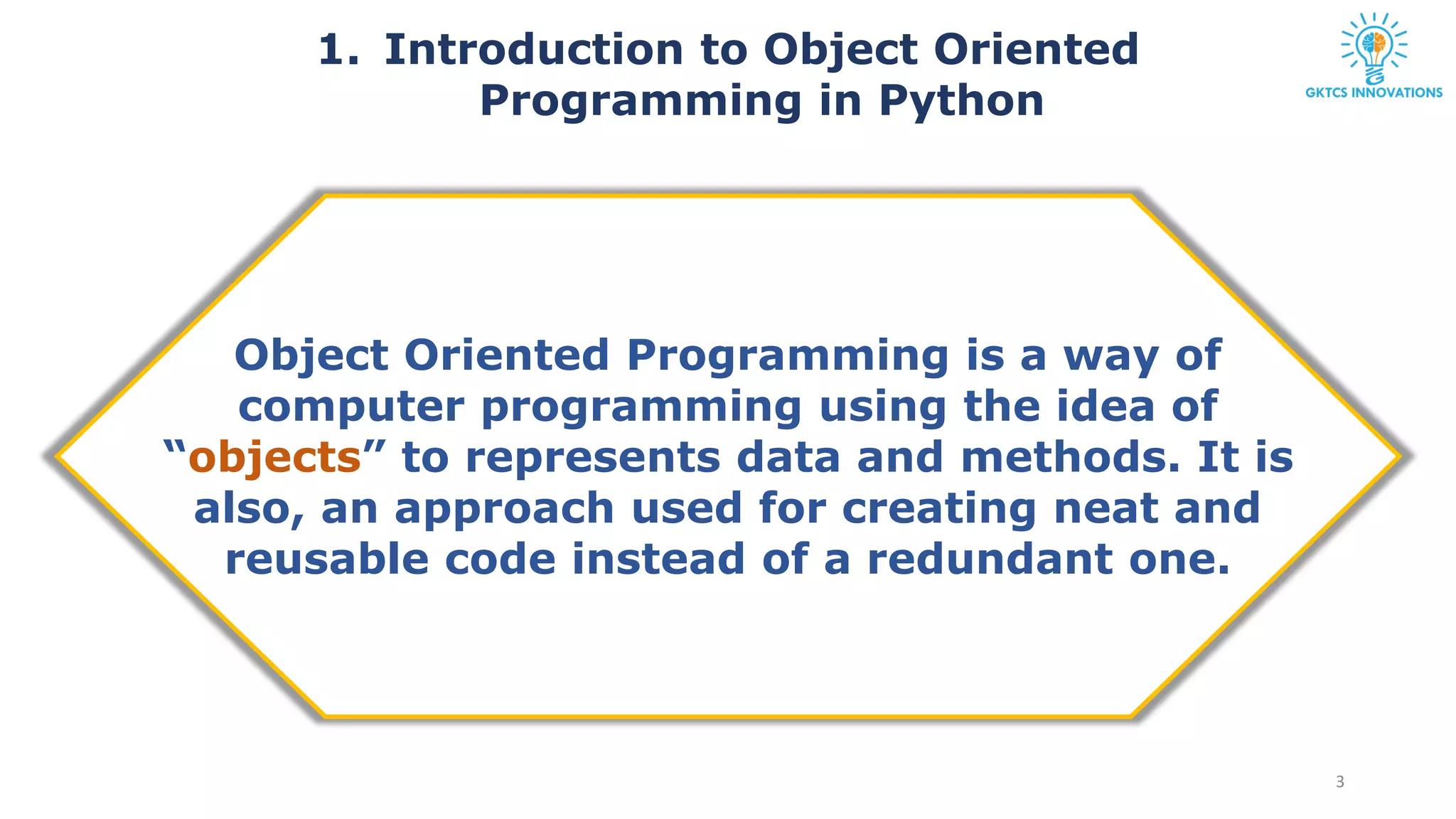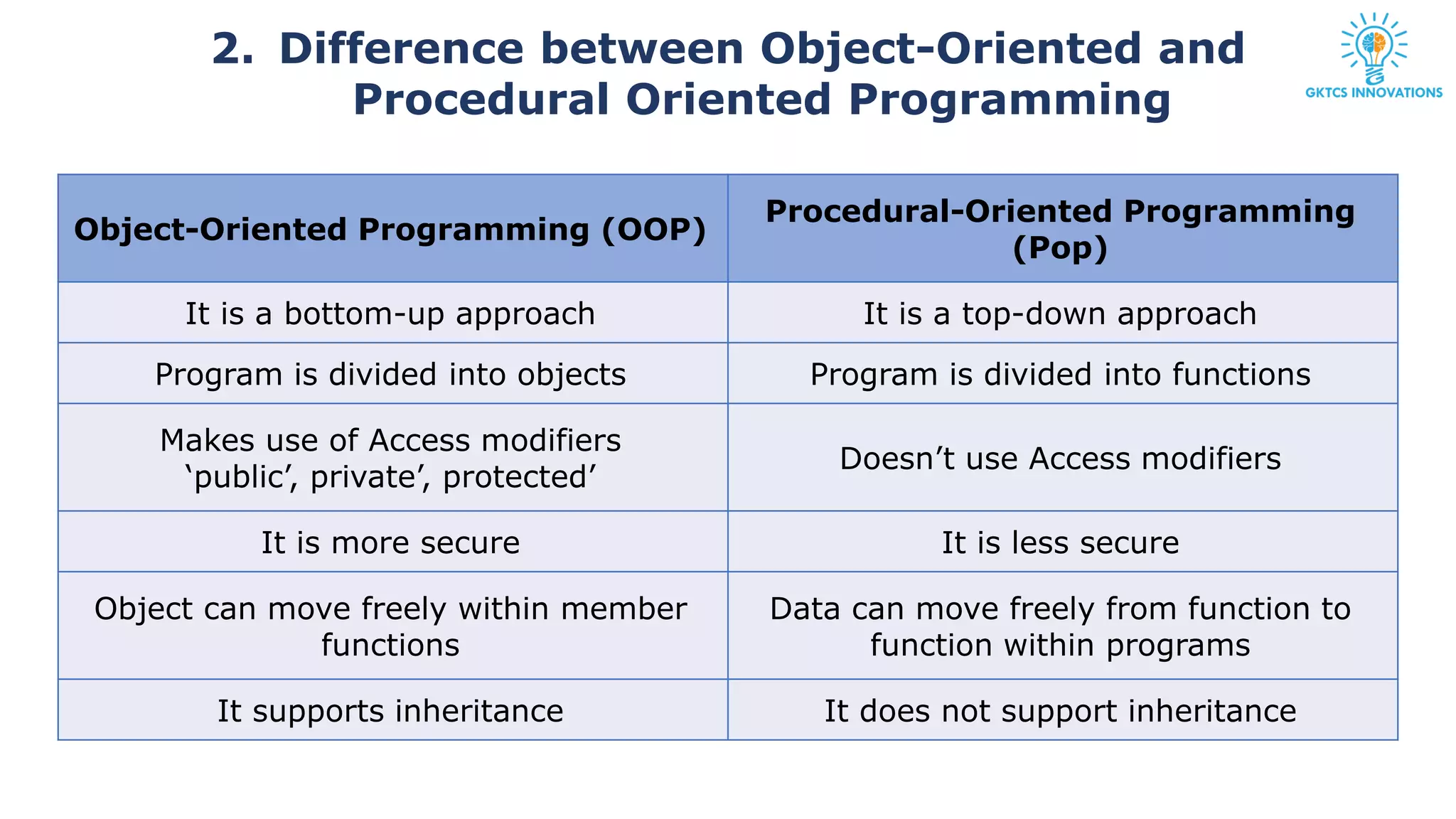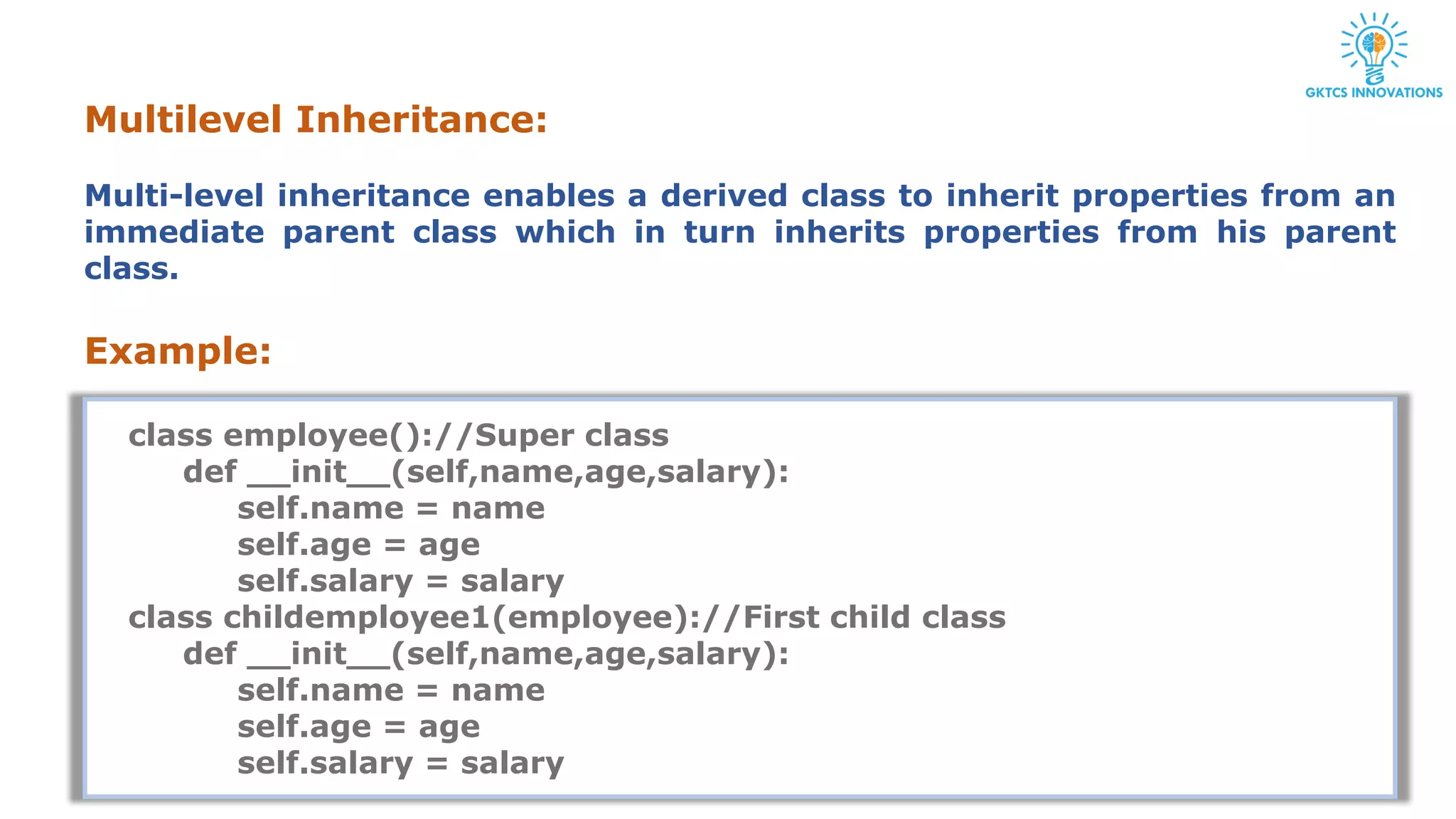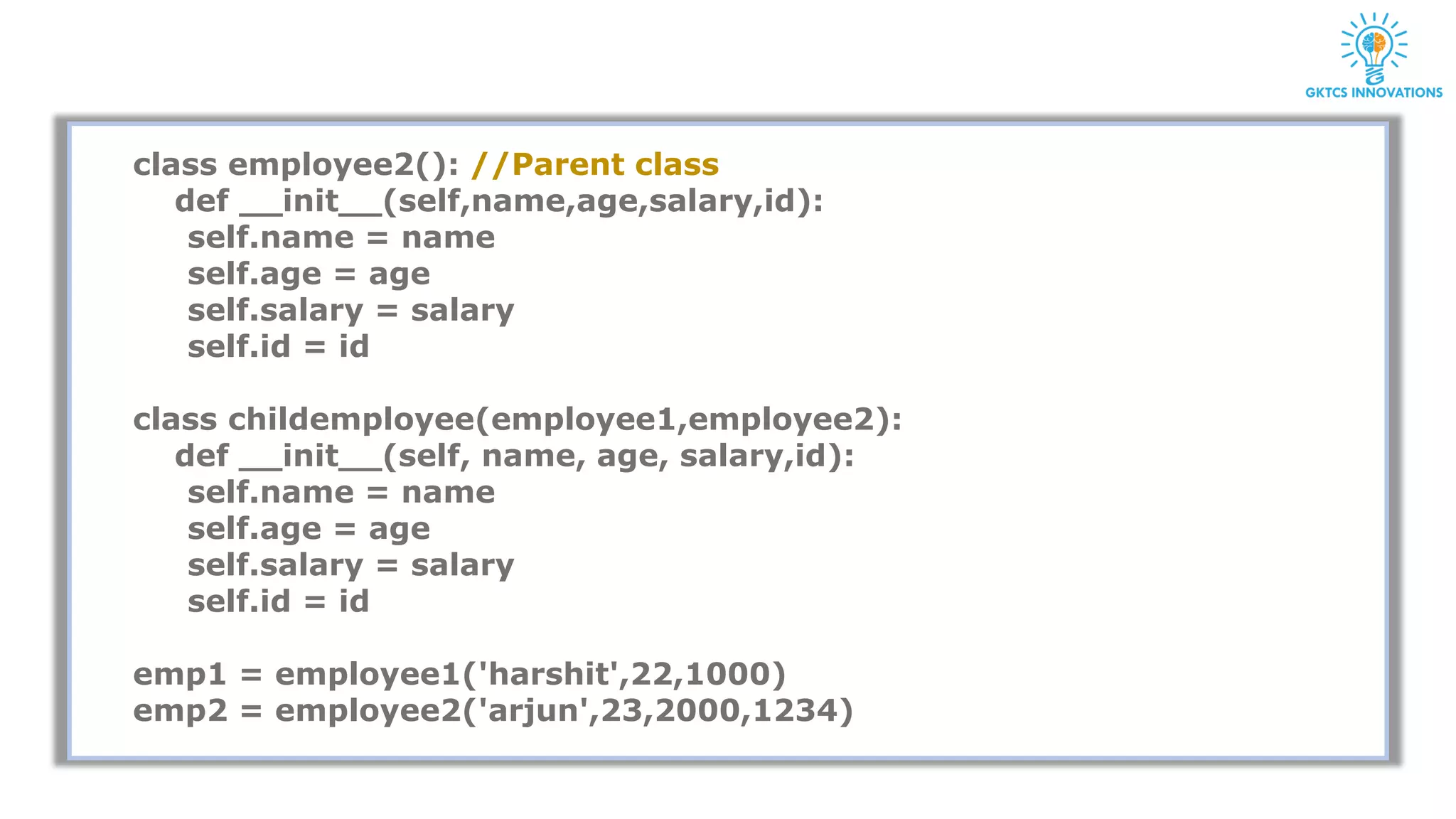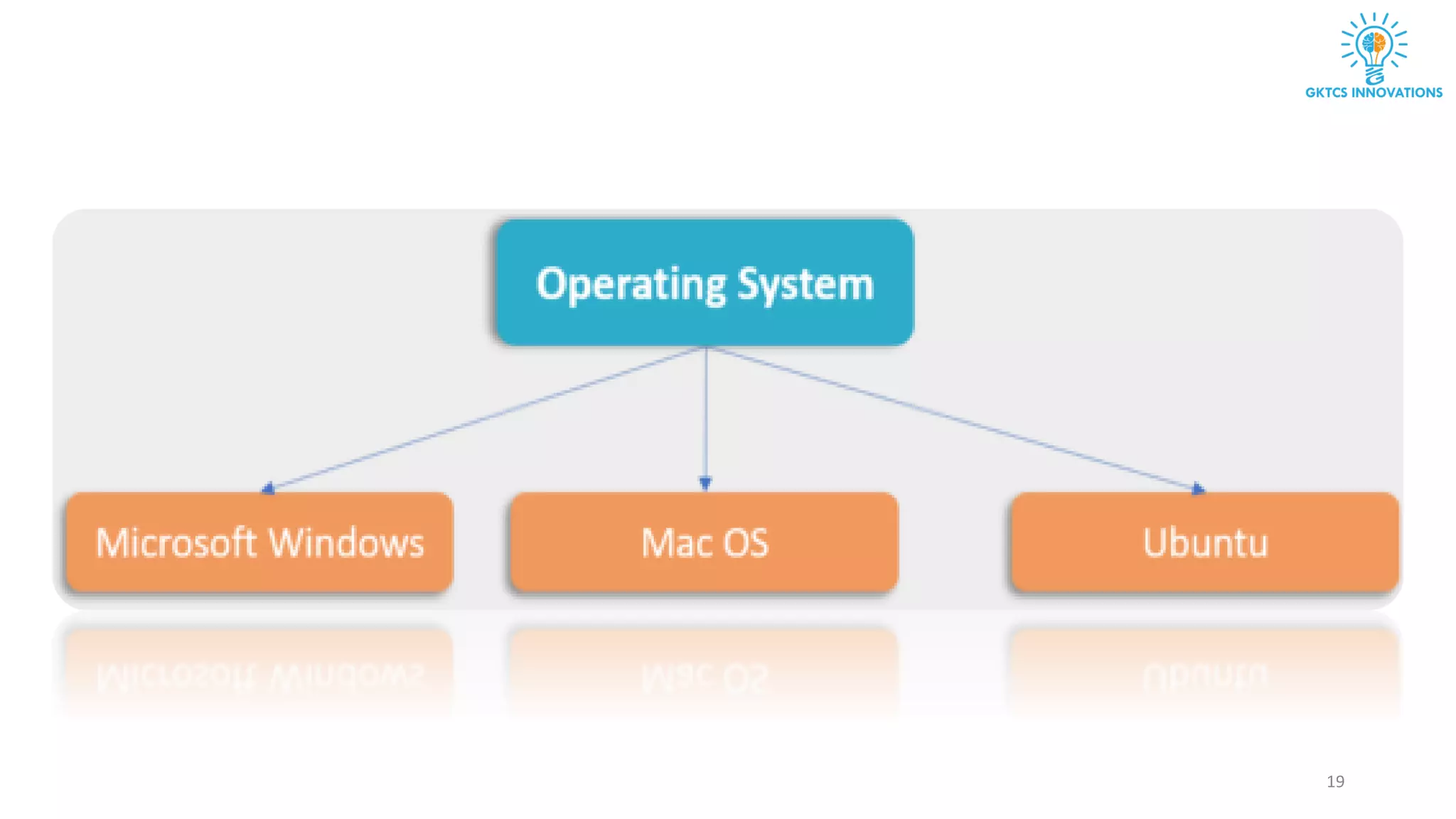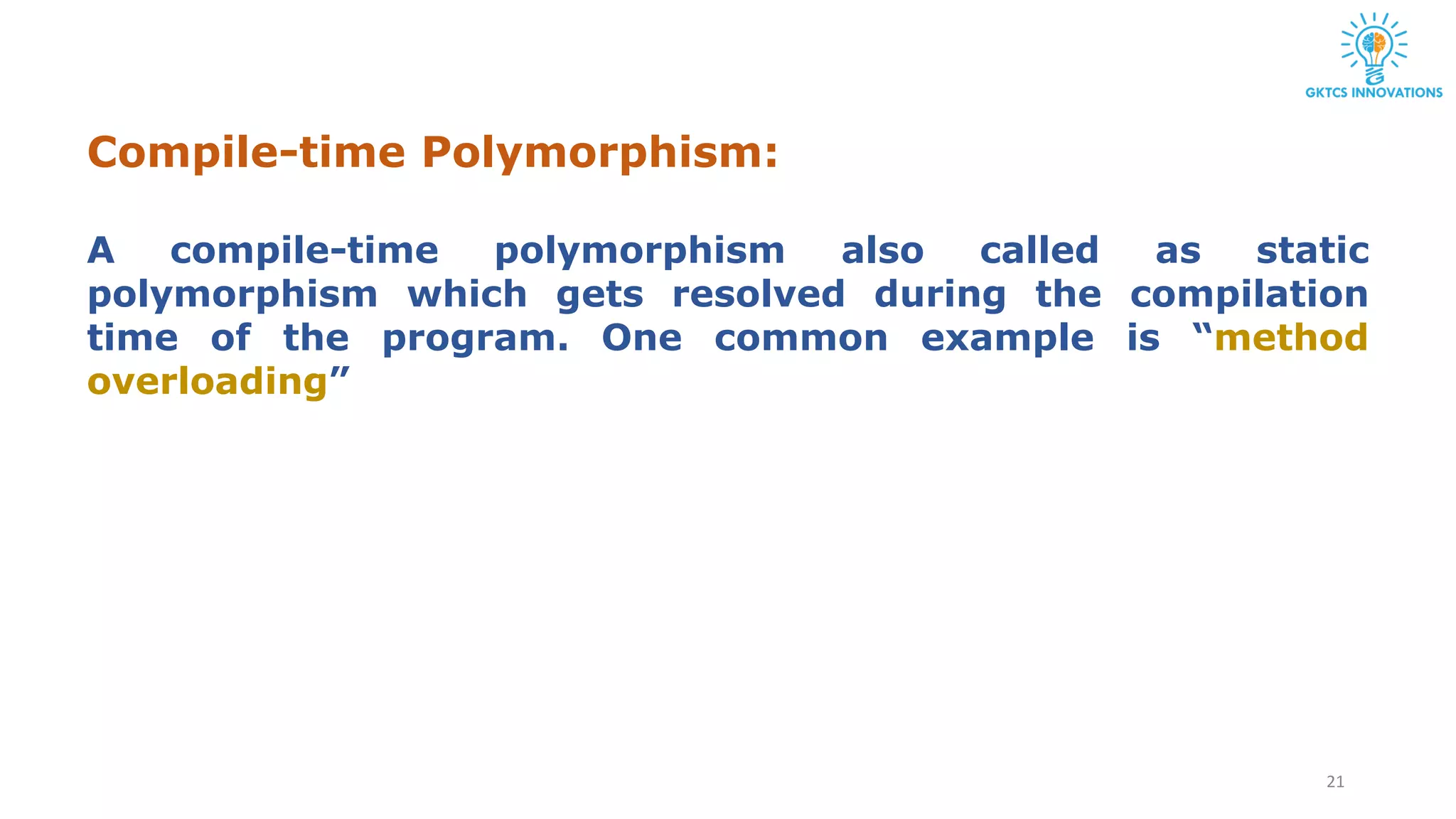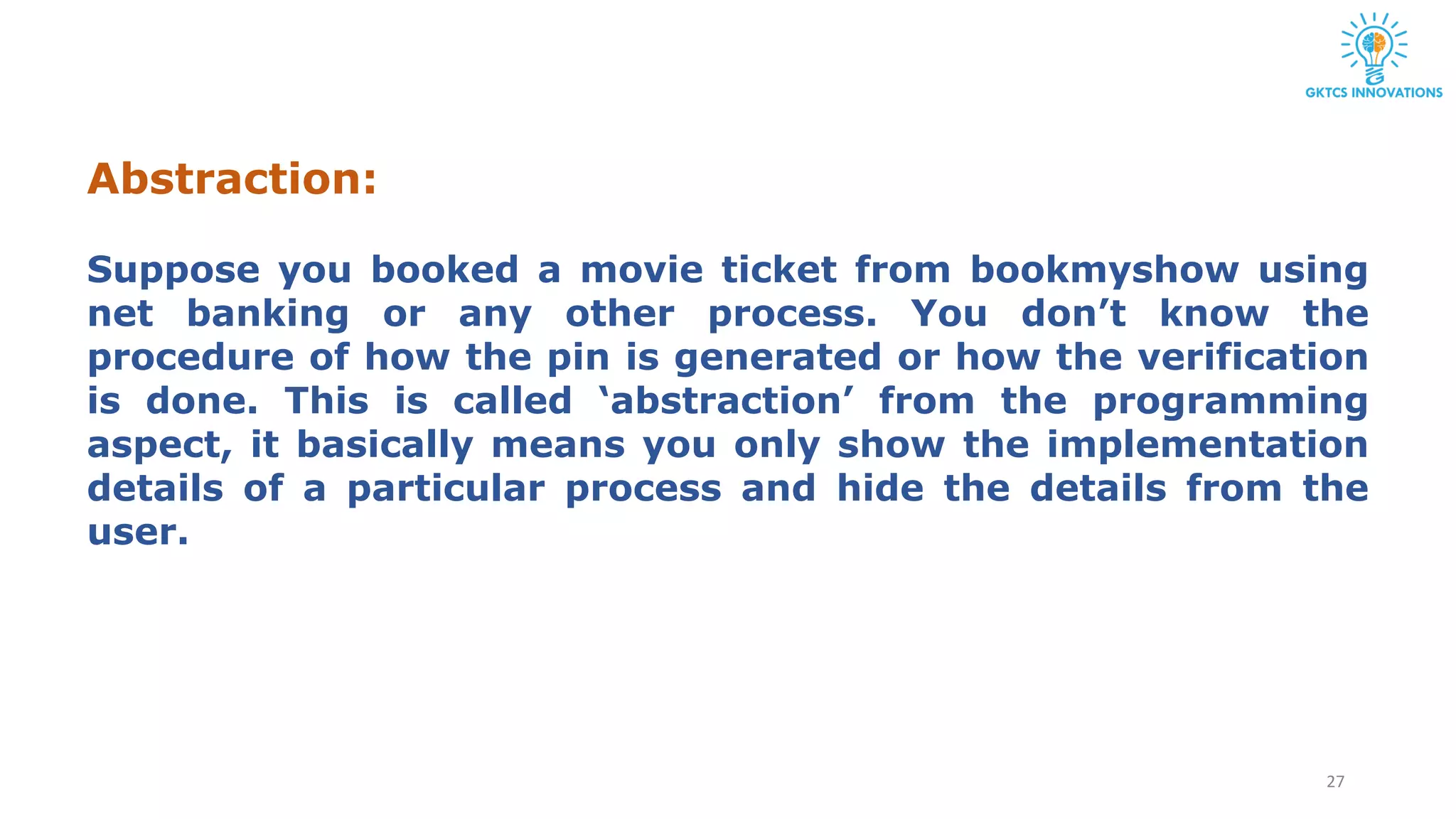The document provides an overview of object-oriented programming in Python. It discusses key concepts like classes and objects, and object-oriented programming methodologies including inheritance, polymorphism, encapsulation, and abstraction. Specific examples are given to illustrate class creation, inheritance between classes, method overloading and overriding for polymorphism, and abstraction by hiding implementation details.


